-
1 of 253523 objects
The Decorations of the Garden Pavilion in the grounds of Buckingham Palace 1845
44.5 x 35.4 cm (book measurement (conservation)) | RCIN 708005
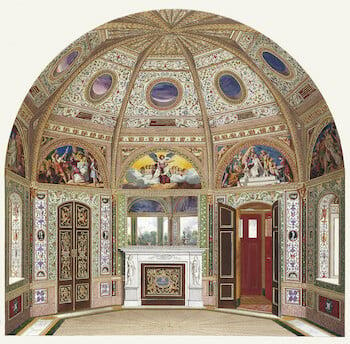
Ludwig Grüner (1801-82)
The Decorations of the Garden Pavilion in the grounds of Buckingham Palace 1845
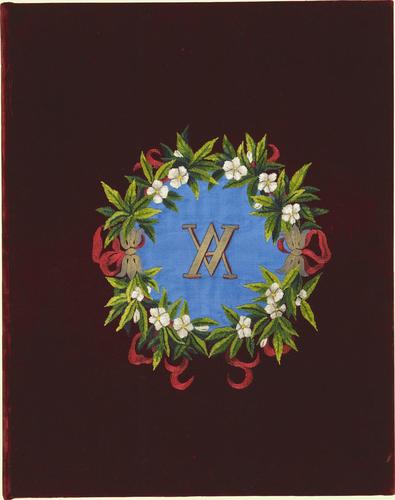
Ludwig Grüner (1801-82)
The Decorations of the Garden Pavilion in the grounds of Buckingham Palace 1845

Ludwig Grüner (1801-82)
The Decorations of the Garden Pavilion in the grounds of Buckingham Palace 1845
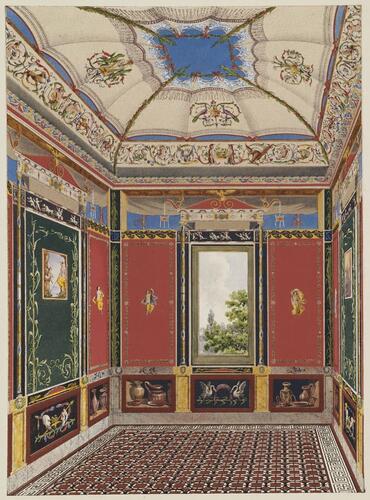
Ludwig Grüner (1801-82)
The Decorations of the Garden Pavilion in the grounds of Buckingham Palace 1845
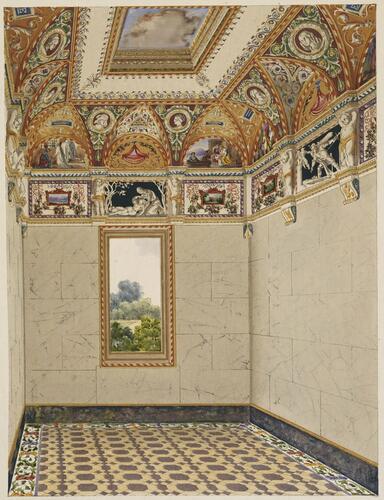
Ludwig Grüner (1801-82)
The Decorations of the Garden Pavilion in the grounds of Buckingham Palace 1845





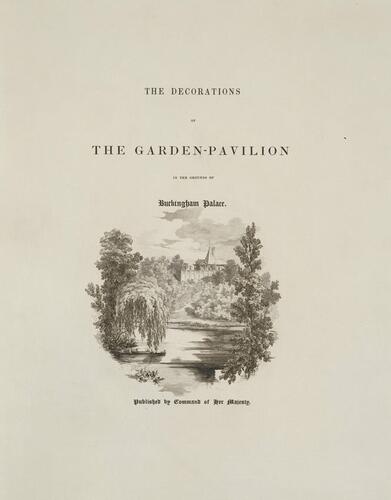
-
A printed volume with plates showing the decorations of the Garden-Pavilion in the grounds of Buckingham Palace, excecuted under the supervision of L. Gruner and preceded with text by Mrs Jameson. Bound in red velvet with a V&A monogram. Contained in a leather-bound box.
The destruction of the old Houses of Parliament by fire in October 1834 offered the chance of a large-scale prestige project for native artists. A committee appointed to consider how this might be done recommended the use of fresco, until then a rare medium in Britain (though recently revived on the Continent), but one which this opportunity might allow to flourish. Prince Albert was appointed Chairman of the Royal Commission on the Fine Arts with a specific brief to oversee the task of decorating the new Palace of Westminster. The Garden Pavilion (demolished in 1928) was a small cottage or pavilion in the garden of Buckingham Palace, initially intended as ‘a place of Refuge’, which turned into a major project and was his personal laboratory, in which he, Charles Eastlake and Ludwig Gruner oversaw the experimental work of eight British artists. The Prince saw it as a step towards the introduction of the Italian technique of fresco to Britain, and commissioned artists to decorate rooms dedicated to the works of native authors, such as Comus by John Milton.
Anna Jameson, who wrote the introduction to Gruner’s publication, was among the earliest female art critics. Her most notable publications were the five-volume series Sacred and Legendary Art (1848–64) regarded as a standard in its field, and Memoirs of the Early Italian Painters (1845).
Text adapted from Victoria & Albert: Art & Love, London, 2010.Provenance
Acquired by Queen Victoria
-
Creator(s)
(lithographer)(publisher)Acquirer(s)
-
Medium and techniques
Measurements
44.5 x 35.4 cm (book measurement (conservation))
Category